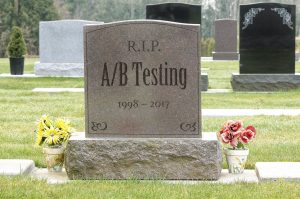During MarTech East, Jonathan Roman outlined why we must consider all areas of the organization, not just the marketing team when adding to a martech stack.
Jonathan Roman walks onto the stage, coffee cup in hand. He’s relaxed. He’s confident. He knows his story is going to be compelling. And it is.
Working with Ancestry.com for a little over a year, Roman has overseen a radical shift in how consumer data is augmented, cleansed and segmented to drive a customer-first digital marketing strategy that works. He is one of a new breed of marketing technologists that understand both the platforms that exist and how they work, as well as how they can be applied in the market – seemingly a rare skill, but one that pays dividends for the organization when put to good use.
The data evolution of Ancestry.com is an interesting one – founded in 1983 before customer data was such a hot topic, they produced lots of books, which were released to their members, and through the
While many technologies exist to augment the marketing technology stack, to be successful you have to consider all areas of the organization, not just the marketing team. Ancestry.com’s challenge was no different and was solved by following three simple principles as Roman overhauled how they worked with and used its data. Principles that can be applied to other organizations facing similar issues.
People and process
Ensure that everyone is on-board with the vision, not just the marketing team, but IT and information security too. Avoid working in silos and standardize request processes. Offer regular, open education to other groups as well as taking the time to understand request processes of other teams. Most importantly, create a trust-based culture of sharing success and saying “thank you.”
Standardization and governance
Establish and champion standardized account structures, tagging architecture and taxonomy across all platforms. Create governing councils to oversee highly impactful and involved projects. Set-up automated quality assurance where possible. Understand the data that your vendors are collecting and why they are collecting that data…and, most importantly, invite the legal team to everything!
Ad/marketing technology
Re-evaluate the ad/marketing technology stack regularly. Assess the synergy and compatibility of the marketing stack, and access the impact of industry changes or regulation against it. Learn the platforms as a user, not just as an owner – if you find it’s challenging to work with, engagement will be low and you must demand more from your vendors and partners.
When explaining the most significant single platform change that has enabled Ancestry.com’s marketers to truly adopt agile marketing, Roman is clear – it’s the deployment of a Customer Data Platform (CDP). The CDP is the central piece of martech that allows the team to move quicker. It unifies data from all data sources, cleanses, transforms, unifies, enriches, segments and predicts user behavior – ultimately allowing marketers to personalize the website, ad, email and social campaigns, direct mail and push messaging.
The session’s remit was to put the right systems and processes in place to allow marketers to move fast – to drive new customers from prospects and to impress or delight those that already subscribe. Marketing enablement, if you will. It’s been a journey, but one that Roman and his team of 30 marketing technologists have successfully navigated.
More about the MarTech Conference
Opinions expressed in this article are those of the guest author and not necessarily Marketing Land. Staff authors are listed here.
Marketing Land – Internet Marketing News, Strategies & Tips
(27)
Report Post






